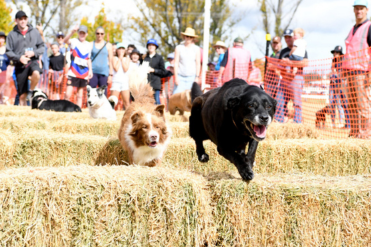Six million hectares of threatened species habitat has gone up in smoke.
Analysis by scientists from La Trobe University, University of Queensland, University of Sydney and BirdLife Australia, shows that over 70 threatened species on the brink of extinction have had more than 50 per cent of their range burnt.
Recent fires have imperilled the future of species as diverse as the Kangaroo Island Glossy Black-Cockatoo, Long-footed Potoroo and Littlejohn’s Tree Frog.
Twenty-nine of the 30 species that have had more than 80 per cent of their range burnt are plants.
The unprecedented bushfires around Australia over the past few months have left us all familiar with images of incinerated vegetation and distressed wildlife, and it is estimated that more than one billion mammals, birds and reptiles have perished in the flames. But even these huge losses of individual animals and plants do not reveal the full scale of the impact of the recent catastrophic fires on biodiversity.
In an article published on Sunday in The Conversation, a team of researchers from BirdLife Australia, La Trobe University, University of Queensland and University of Sydney, explain how using publicly available satellite imagery to look at the burnt areas (up to January 7, 2020) they were able to map where the fires overlapped with the distributions of all the threatened animals and plants listed under the National Environment Protection and Biodiversity Act.
The news is not good.
“We conservatively estimate that six million hectares of threatened species habitat has been burnt,” said Michelle Ward of the University of Queensland. “We found that 99 per cent of the area burnt in the current fires contains potential habitat for at least one nationally listed threatened species.”
“Approximately 70 nationally threatened species have had at least 50 per cent of their entire range burnt, while nearly 160 threatened species have had more than 20 per cent of their range impacted,” continued Michelle.
These species are already threatened with extinction due to other threats, such as land clearing, introduced feral predators and weed invasion.
“More threatened plants have been affected than other groups,” said Dr Ayesha Tulloch one of the researchers from University of Sydney. Twenty-nine of the 30 species that have had more than 80 per cent of their range burnt are plants. Several species have had their entire range consumed by the fires, such as the Mountain Trachymene, a fire-sensitive plant found in only four locations in the South Eastern Highlands of NSW.
Other species that have been severely impacted include the Kangaroo Island Glossy-Black Cockatoo” said Samantha Vine, Head of Conservation at BirdLife Australia. “Their entire populations numbered only around 400 prior to the bushfires that has likely burnt more than 75 per cent of their best habitat.”
“Threatened species vary in their ability to cope with fire. A few species are likely to thrive after fire but more than 50 per cent of the habitat of several species known to be susceptible to fire has been burnt in these fires, including the Long-footed Potoroo and Littlejohn’s Tree Frog,” said Dr Jim Radford of La Trobe University. “But we do not know the likely response to fire for many threatened species. This is something we need to find out.”
With the probability of extinction increased for fire-sensitive threatened species by these catastrophic fires, the research group say there is still hope that with enough investment in conservation actions, guided by evidence-based science, it may be possible to help threatened species recover after the embers settle.
Protection and conservation-focussed management of areas that have not burned will be the single most important action if threatened species are to have any chance of persistence and eventual recovery. Closely followed by management of threats such as feral predators, introduced herbivores such as deer, horses and goats, suppression of weeds and prevention of habitat destruction through logging and thinning.
“Unconventional recovery actions will be needed because this unique situation calls for out-of-the-box thinking,” said Samantha Vine.
“These losses do not need to be in vain. We have an opportunity to transform our collective grief into collective action”, added Samantha.
“The futures of our beloved plants and animals — and our own — depends upon it,” she said.








